Losing hair is a legitimate aesthetic concern for both men and women. A sign of premature ageing, baldness can often have psychological repercussions and be a precursor of hormonal disorders, or even a systemic autoimmune disease. To help you find an effective treatment for hair loss and to help you make the right choices to stop hair loss and why not regain a healthy and dense head of hair, this guide to alopecia will help you better understand male and female alopecia: symptoms, causes, classification by type of alopecia, as well as all the cures and treatments available, including the various hair transplant techniques.
What is alopecia?
Alopecia is an abnormal loss of hair or body hair, unlike natural hair renewal. Every day, we all lose between 20 and 100 hairs, with variations depending on age and season. When hair loss becomes more significant and regular, and hair does not grow back, when bald patches appear on the head or when the hair density thins out, alopecia can be diagnosed. Alopecia is not an uncommon or isolated phenomenon: it affects about 30% of men after the age of 30, and 50% after the age of 50. Even if women are less affected, with a proportion of about 20% after age 40, female alopecia is often more traumatic from an aesthetic point of view. Because it is socially and culturally less accepted and, unfortunately more difficult to treat than male alopecia.
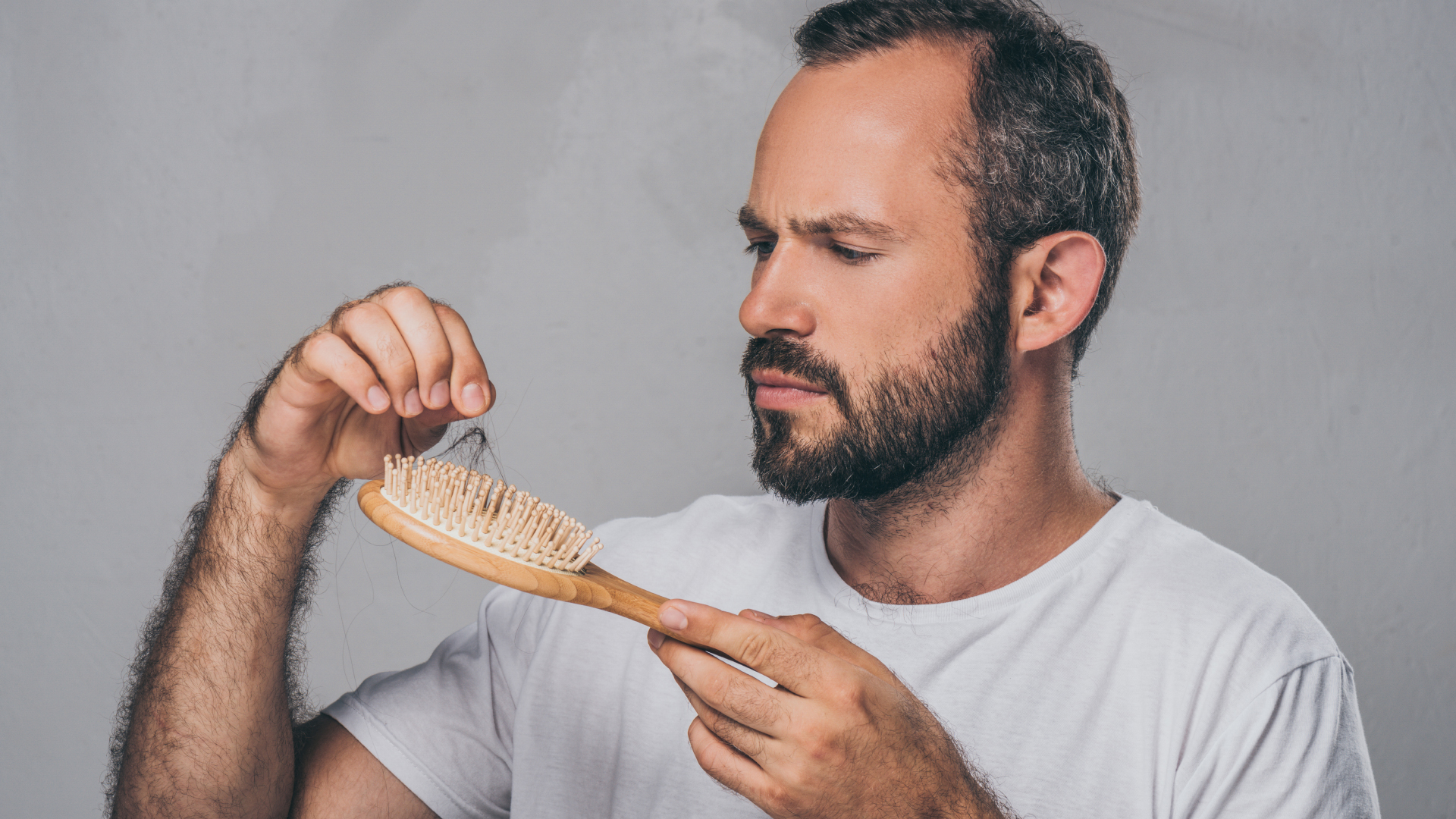
The term alopecia covers all types of hair loss, whatever the cause. These are numerous and varied, both in their origin and in their evolution. Alopecia can be acquired or congenital, diffuse or localised, chronic or acute. There are many drug treatments, depending on the origin of the hair loss. But the most common, for both men and women, is androgenetic alopecia. And hair grafting is today its best therapeutic response.
Classification of the different types of alopecia
To diagnose alopecia and thus propose the most appropriate treatment for the patient, doctors specialising in the hair system refer to several evaluation and medical diagnostic tools, defining the physiological origins and the stage of evolution of alopecia. First, they differentiate between scarring and non-scarring alopecia. These are not scars in the sense of injuries to the epidermis following an accident or a cut. Even though, of course, hair surgery and localised hair transplants have the ability to mask areas of the scalp that have received trauma to the skin by grafting follicles onto the scarred area.
Scarring alopecia is caused by active destruction of the hair follicle when it no longer grows back, and fibrous tissue irreversibly colonises it. Scarring alopecia can be subdivided into primary forms, where the target of the inflammation is the follicle, and secondary forms, where the follicle is destroyed due to non-specific inflammation.
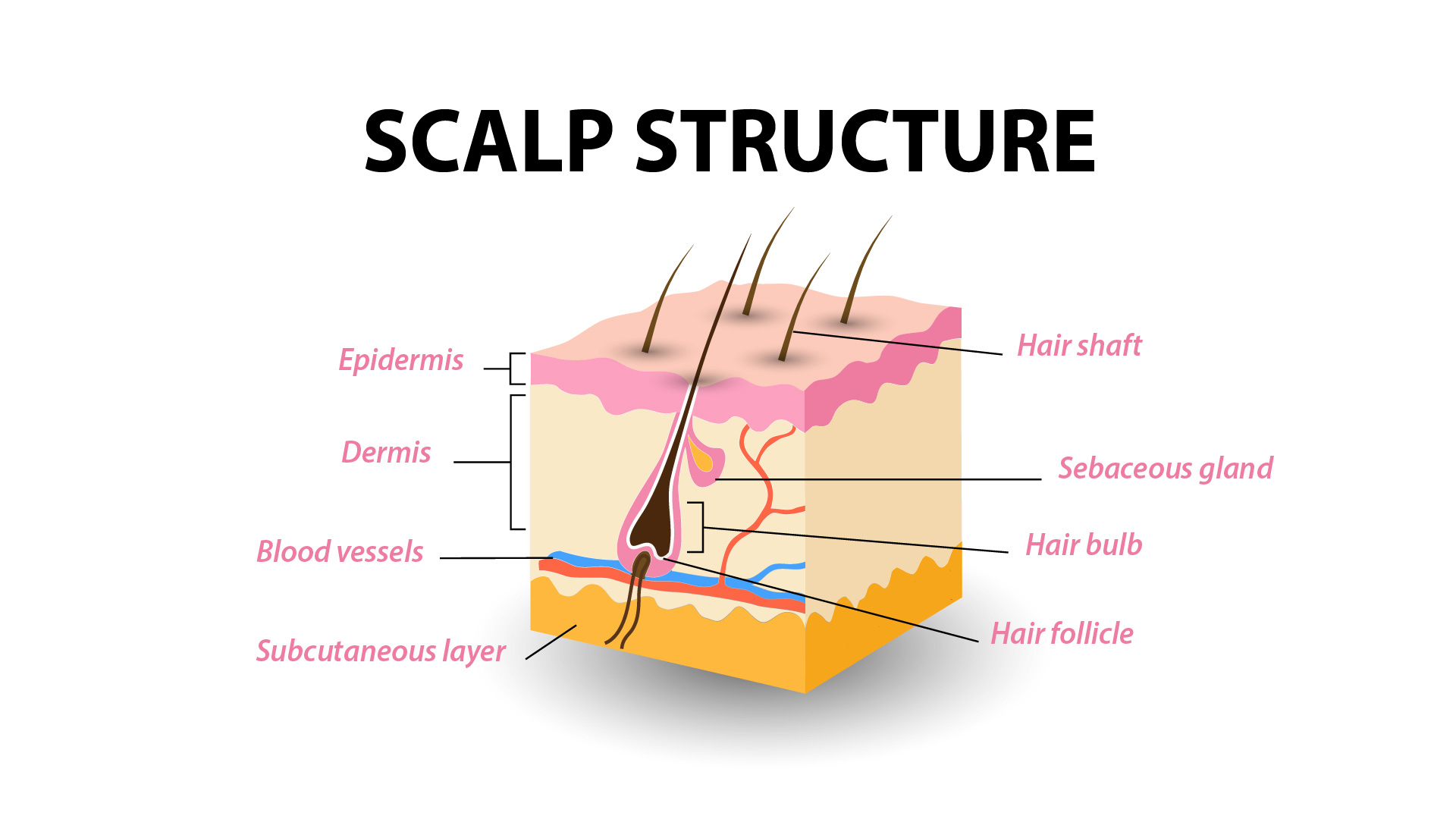
Non-scarring alopecia results from a physiological process that affects hair growth but does not cause irreparable damage to the hair follicle. Disorders that primarily affect the hair shaft (tricho-dystrophies), the outer part of the hair, are also classified as non-scarring alopecia. However, many hair disorders have a biphasic course, with non-scarring alopecia occurring early in the disease, followed by scarring alopecia and permanent hair loss as the disease progresses.
Understanding the stages of progression of baldness is also essential in the diagnosis of alopecia, with a different classification for men, with the Hamilton-Norwood scale, and for women, with the Ludwig scale.
Male alopecia: the Hamilton-Norwood scale
This scale classifies baldness into the following types:
- Type 1: slight hair loss in the frontal area.
- Type 2: hair loss on the temples.
- Type 3: minimum level of baldness, with hair loss in the vertex area.
- Type 4: hair loss widens around the vertex and colonises the entire frontal area.
- Type 5: the frontal and vertex areas are only separated by a narrow strip of hair. The area still has hair is shaped like a horseshoe around the skull.
- Type 6: The hairless area has widened, and the anterior and posterior hairless areas are joined.
- Type 7: At this stage, only a thin strip of the original hair remains between the ears and the nape of the neck.
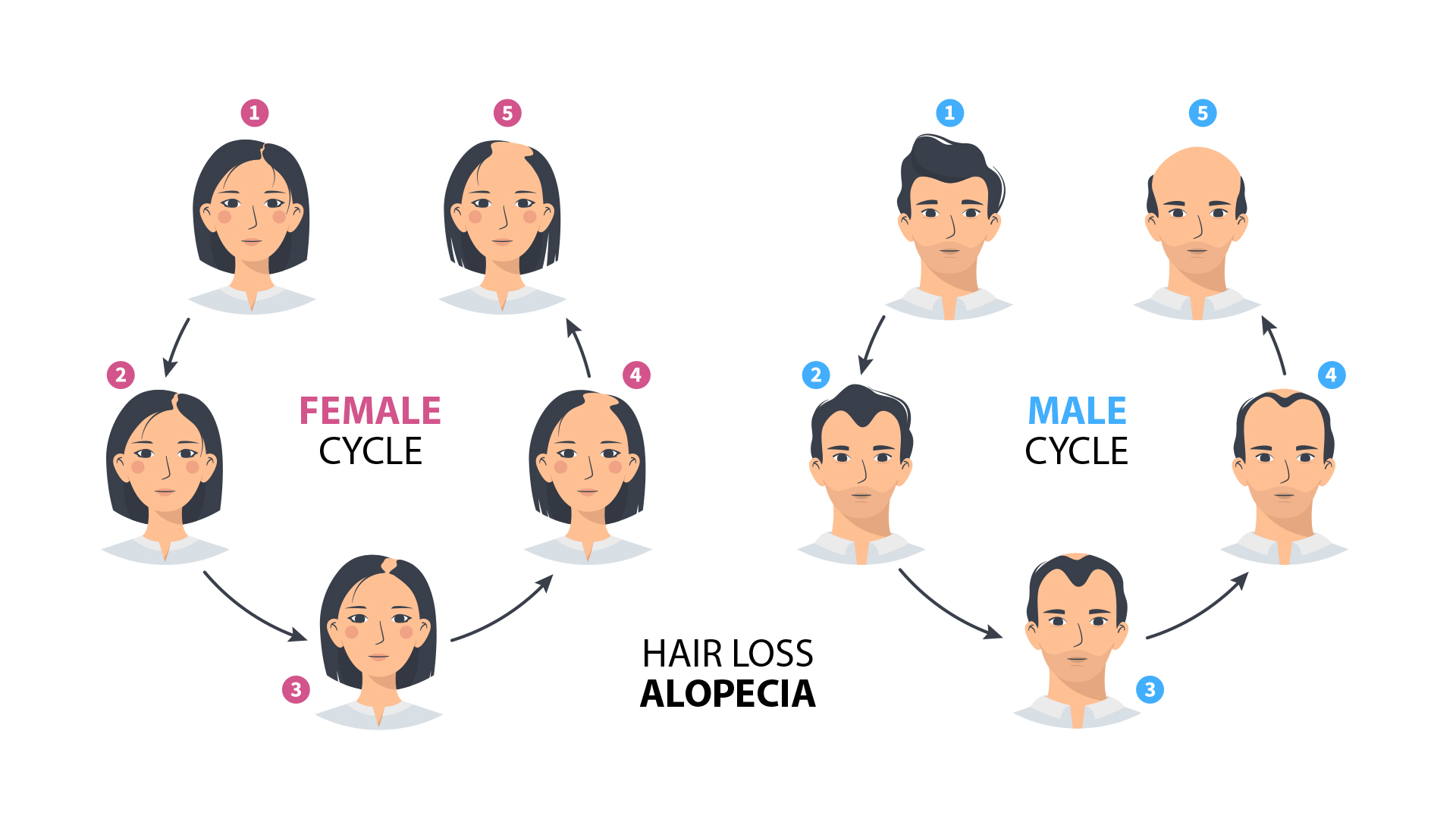
Female alopecia: the Ludwig scale
This scale has five stages. The last three stages, which occur in menopausal women, are rare.
- Type 1: Noticeable diffuse hair loss on the vertex.
- Type 2: More pronounced hair loss on the vertex.
- Type 3: Hair loss on the frontotemporal line.
- Type 4: Continuation of diffuse hair loss and frontotemporal receding hairline.
- Type 5: Complete hair loss, similar to total male pattern baldness.
The hair cycle
Each human being has between 100,000 and 150,000 hairs on his scalp. Their density varies according to their genetic origin, but also the possibility of being affected by premature hair loss. Alopecia is less frequent in Asia than in the Caucasian population, but it affects the African population even more, especially women: 70 to 80% of black American women over the age of 50 are affected by alopecia, especially traction alopecia due to hair abuse.
Hair consists of two parts: the root, which grows under the scalp from the bulb of a hair follicle, and the visible part, called the hair shaft. Since each follicle is independent of its neighbour, hairs don’t grow at the same rhythm. However, regardless of genes, all humans share an identical hair growth system, which occurs in cycles, each consisting of three different phases.
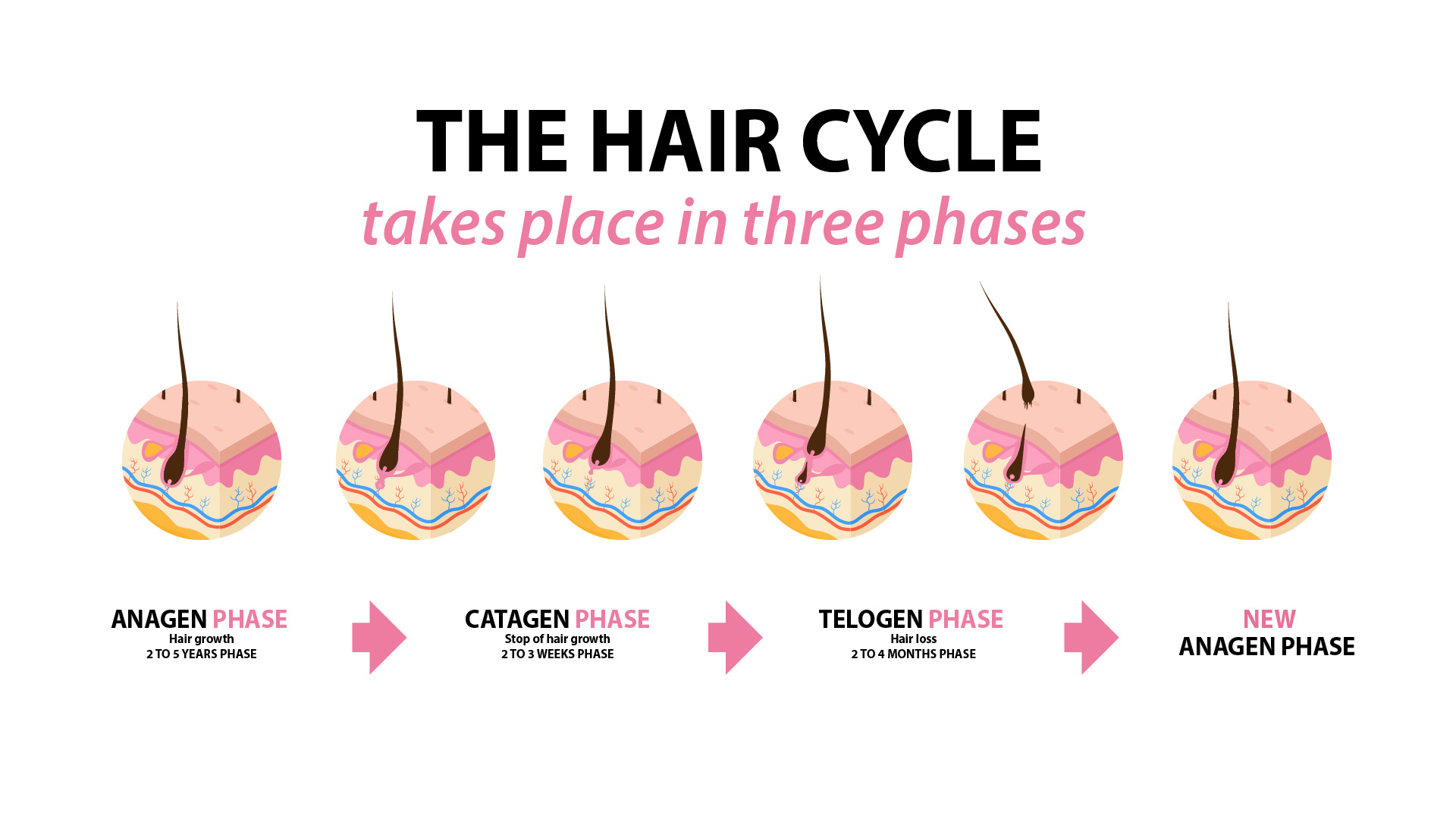
- Anagen phase: The hair growth phase lasts 2 to 6 years, depending on the individual. 85% of our hair is located in this phase, during which the growth of keratin, which makes up the hair, is constant, and its root fills the hair follicle to its base. As age advances, the anagen phase of hair shortens. The hair then grows thinner and less dense.
- Catagen phase: For 2 to 3 weeks, the hair remains attached to its root but stops growing and enters the catagen phase, a period known as the transient apoptotic phase, which affects about 3% of our hair.
- Telogen phase: 6 to 7 months, the hair enters its resting phase, while the hair follicles gradually retract. The hair shaft detaches from its hair follicle, giving way to the production of new hair under the skull’s skin. This phase concerns, in turnover, about 12% of our hair.
At the end of the telogen phase, the dead hair falls naturally, driven out by a new hair in the anagen phase. This complete cycle repeats about 25 times during a human being’s life. Each adult loses between 50 and 100 hairs on an ordinarily dense head daily. When hair doesn’t grow back, it may be related to a disorder of the growth cycle. Thus, anagen effluvium is an interruption of the growth phase, leading to an abnormal loss of anagen hair. Telogen effluvium causes an abnormal increase in the number of hairs entering the resting phase.
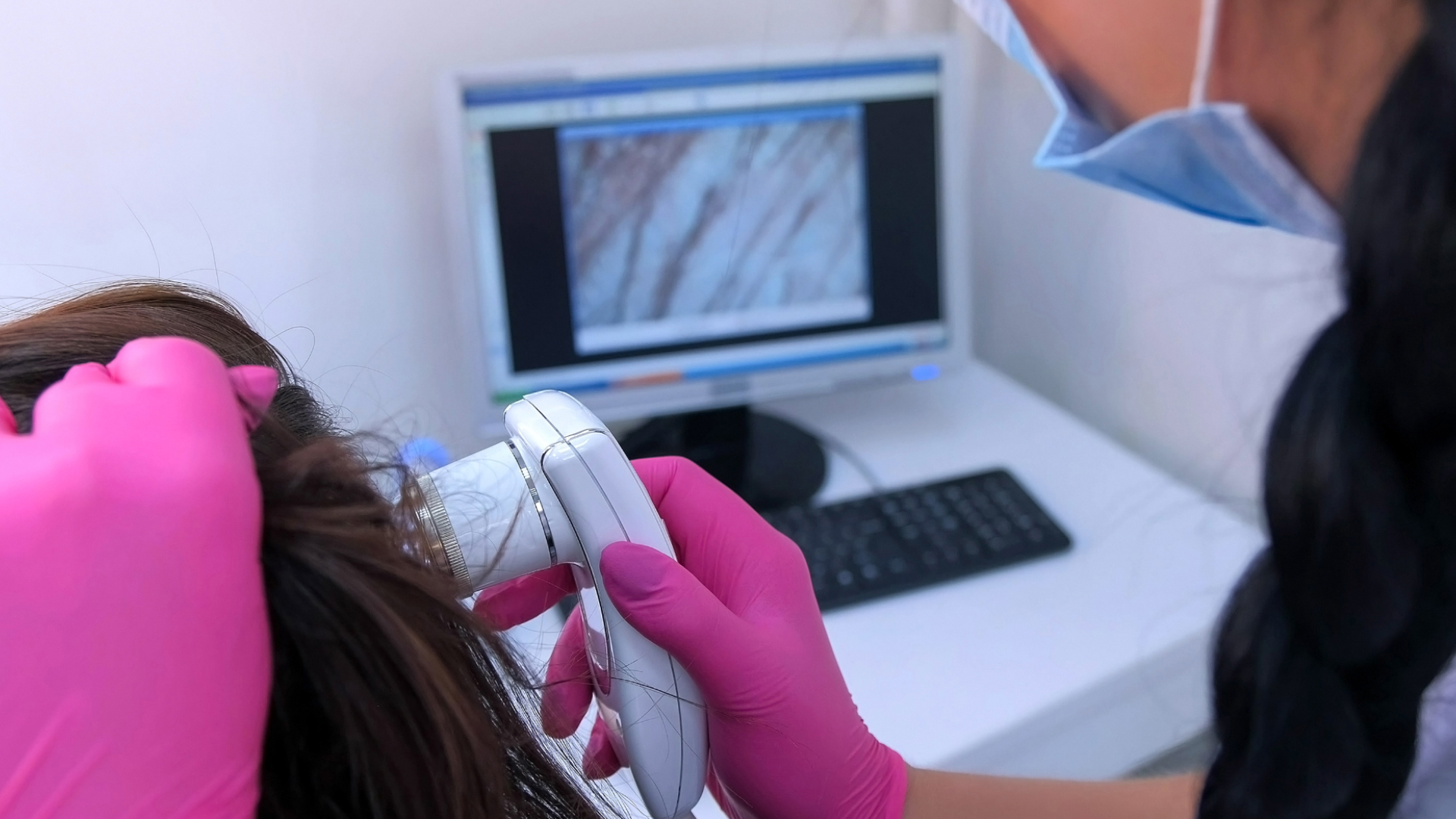
Causes of alopecia
The possible causes of baldness are numerous and varied. Heredity, hormonal imbalances, stress and fatigue are among the most common causes of alopecia. But certain scalp infections, seldom pathologies, such as auto-immune diseases, and specific drug treatments, such as chemotherapy, disrupt hair growth. Not to mention nutritional or mineral deficiencies: hair reflects the healthiness of the human body.
Hormones
Androgenetic alopecia
For men, heredity is the primary cause of baldness. If your father or grandfather is bald, watch out: there is a good chance that their genetic hair heritage has been passed on to you. Androgenetic alopecia, whose first warning signs appear between the ages of 25 and 35, is a hereditary androgen-dependent condition in which dihydrotestosterone (DHT) plays a significant role. Also called androstanolone, DHT is a biologically active metabolite of testosterone found in the prostate, testicles, hair follicles and adrenal glands. It is responsible for differentiating the external genitalia into the testicles, starting in the 7th week of human embryo development. With a relatively low presence in the adult male, it is mainly used to regulate his sexual activity: when the sexual desire arises, the testicles secrete androstanolone, causing erection and sperm production. Excessive testosterone can accelerate excessive hair growth and alter the natural hair cycle, exhausting the scalp and making the hair thinner, finally leading to inevitable baldness.
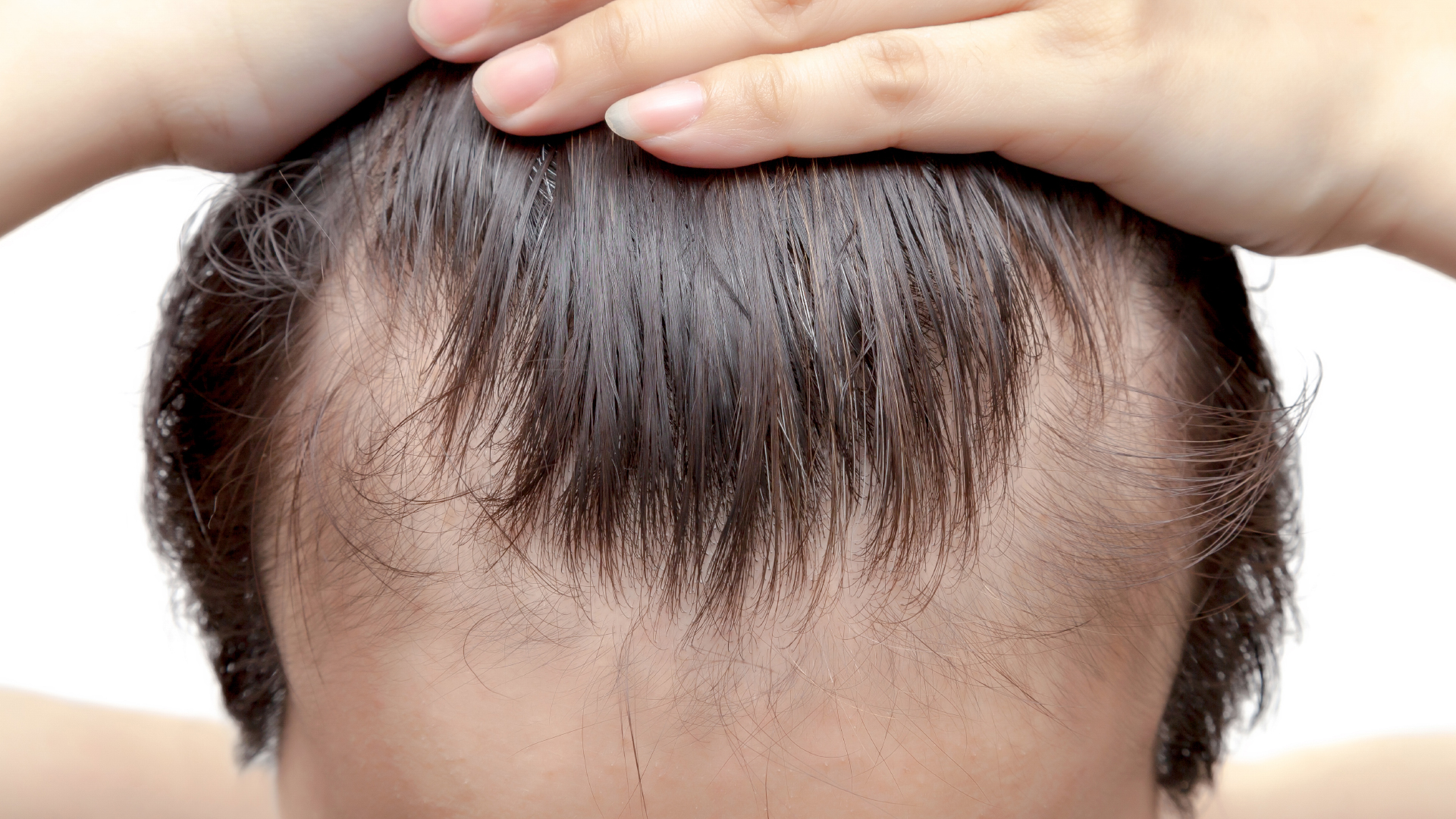
If the role of this androgenic hormone is still not well known in women, its genetic transmission is also one of the main causes of female baldness. Especially after the age of 50, the follicles inherit a particular sensitivity to the combined action of testosterone and an enzyme called 5a-reductase. The meeting of these two elements produces DHT, the growth cycle of the follicles will be disturbed, accelerated and exhausted, producing thinner and thinner hair until its complete disappearance. Androgenetic alopecia increases with age and affects more than 70% of men and 57% of women over 80. However, its prevalence is lower in people of Asian or African descent than among white Caucasians.
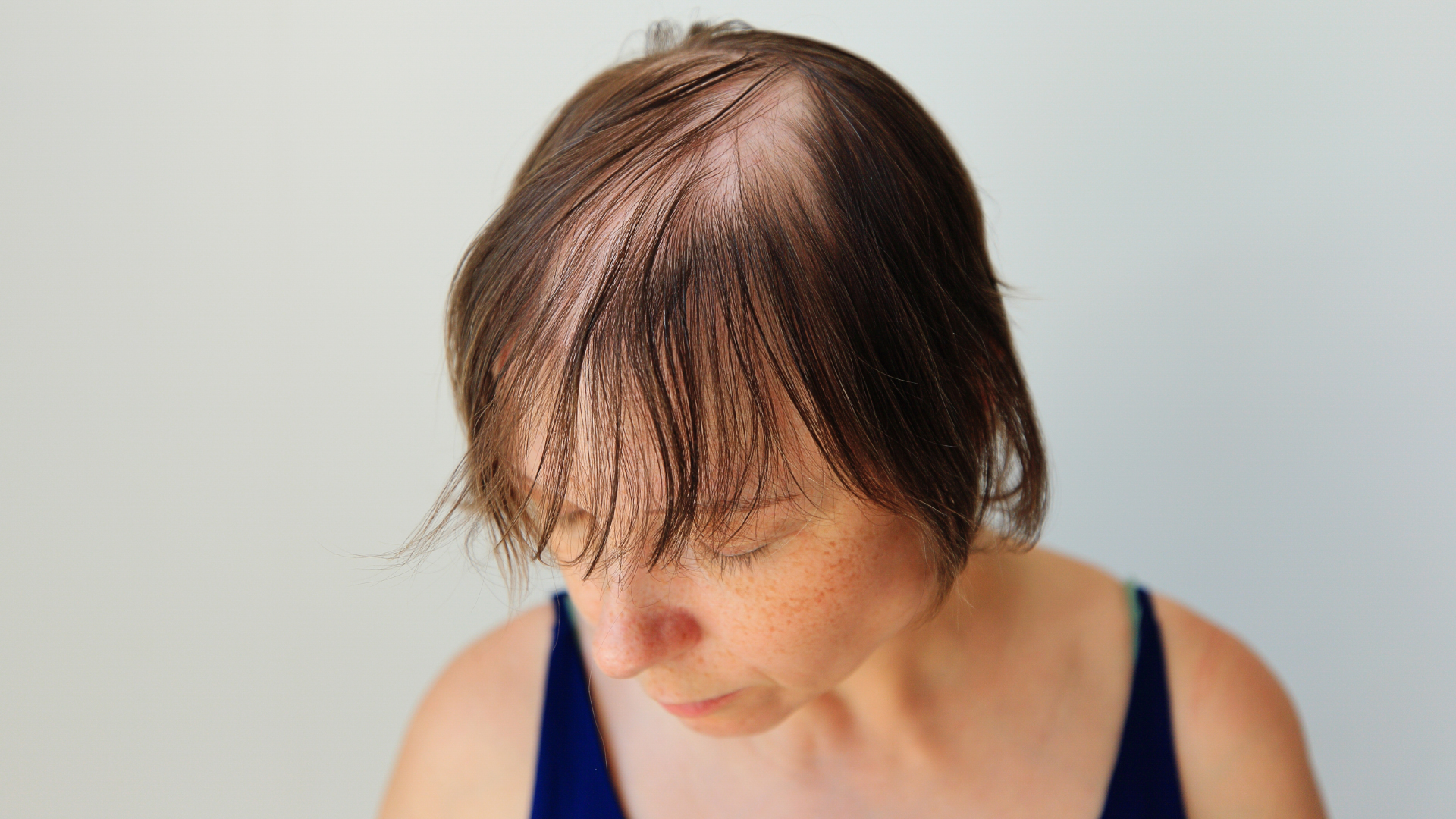
Androgenic alopecia
Androgenic alopecia is another term used for androgenetic alopecia, especially for female alopecia. It encompasses all genetic conditions that can affect women, including hormonal imbalances. After childbirth, at menopause or after taking a contraceptive or substitute treatment, or in the case of a thyroid disorder, the production of female hormones falls sharply to the detriment of male hormones, or androgens. We speak of androgenic alopecia. It will then lead to a disruption of the hair growth cycle, which will generally be more diffuse on the female scalp than on the male scalp.

Chemotherapy or other allopathic treatments
Some drug treatments can affect hair growth. Chemotherapy, in particular, can cause hair loss in both men and women, but not systematically: depending on the treatment received, its duration, and the patient’s hormonal and hair physiology. After such a shock treatment, patients gradually regain their hair. However, the hair sometimes grows back thinner, and diffuse alopecia may occur after regrowth.

Nutritional deficiencies
Since hair is very sensitive to the biological balance of the human body, certain nutritional deficiencies can manifest themselves in the health of your hair. When our body lacks nutrients (proteins, lipids, carbohydrates) or micronutrients (vitamins, minerals, trace elements), hair becomes weak and brittle, and the growth cycle can be slowed down. For example, iron is essential for producing red blood cells, which strengthen hair-building tissues by nourishing them with a sufficient level of oxygen. In addition to iron, deficiencies in magnesium, vitamins D and B, calcium and zinc are the most common. Adopting a healthy and balanced diet, with a significant intake of iron (beet, pulses, soya, red meat, wholegrain cereals, etc.), is the first step in ensuring a long life for your follicles. The second step is to eliminate, as much as possible, the sources of stress which are devastating for the hair.
Psychological causes
The various forms of stress play a significant role in the appearance of certain baldnesses. Even in the case of alopecia of genetic origin, major stress can cause the adrenal glands to become disrupted, producing too many androgenic hormones and disrupting the follicle cycle, especially when the follicles are already hereditarily sensitive.
Stress
Sudden stress (accident, grief, depression, etc.) can cause drastic hair loss in a few months, while deep anxiety or latent and pernicious depression can lead to gradual and diffuse alopecia.
Stress-related to excessive fatigue, called asthenia, can also lead to hair loss. When the body is exhausted, the energy supply needed for hair growth is weakened, decreasing hormone secretions and blood circulation. Stress, like emotional shocks, family or professional tensions, causes a proliferation of pituitary gland hormones and again produces an excess of androgenic hormones, the hair’s worst enemy.
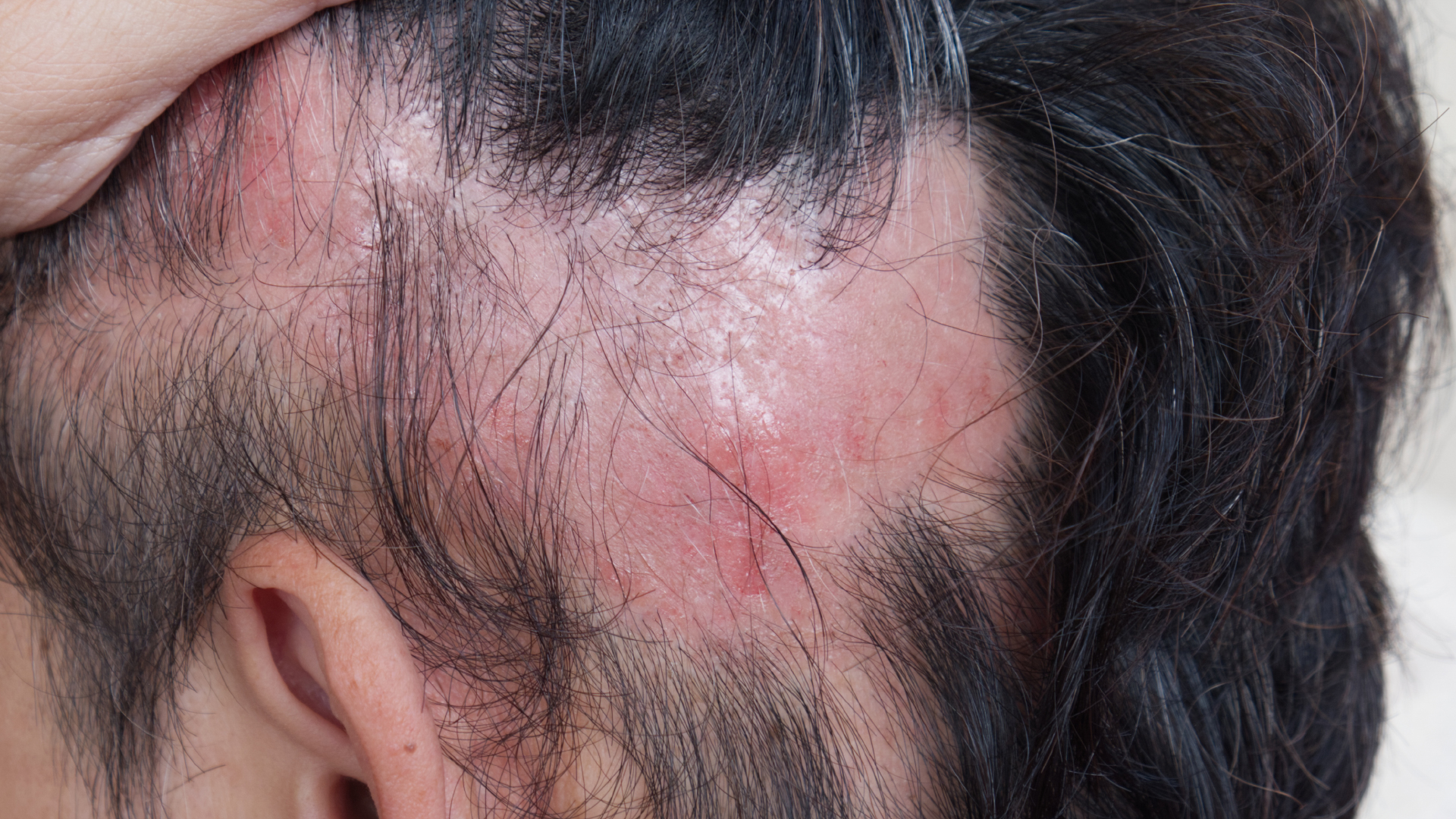
Telogen effluvium
Telogen effluvium, diagnosed after significant and diffuse hair loss, can have many causes. A high fever, a severe infectious disease – telogen effluvium has been diagnosed after a Covid presenting strong symptomatology – a surgical operation under general anaesthesia, a childbirth or a psychological shock can lead to this type of hair loss. Some allopathic treatments, from antidepressants to anticoagulants, estrogen-progestin or antiepileptic drugs can cause hair loss, which ceases when the treatment is stopped.
Telogen effluvium can be acute, with a sudden hair loss (80%) in two or three months, or chronic, lasting and shortening the hair cycle, causing gradual diffuse alopecia over several years, if not diagnosed and treated quickly.
Its first symptoms are an abnormal amount of hair, found on the brush or in the shower. In most cases, telogen effluvium is reversible. Quickly identified and treated, it does not last more than six months, with hair regrowth within three months. It is, therefore important, at the first signs of telogen effluvium to make an appointment with a dermatologist specialising in the scalp. A clinical examination, a medical interview and a digital trichoscopy, which measures the diameter of the hair and its number, generally allow a diagnosis to be made. The treatment is simple, based on anti-hair loss lotions and B vitamins, or even micro-injections of trace elements and vitamins into the scalp. A PRP treatment, also called platelet mesotherapy, can be very effective.
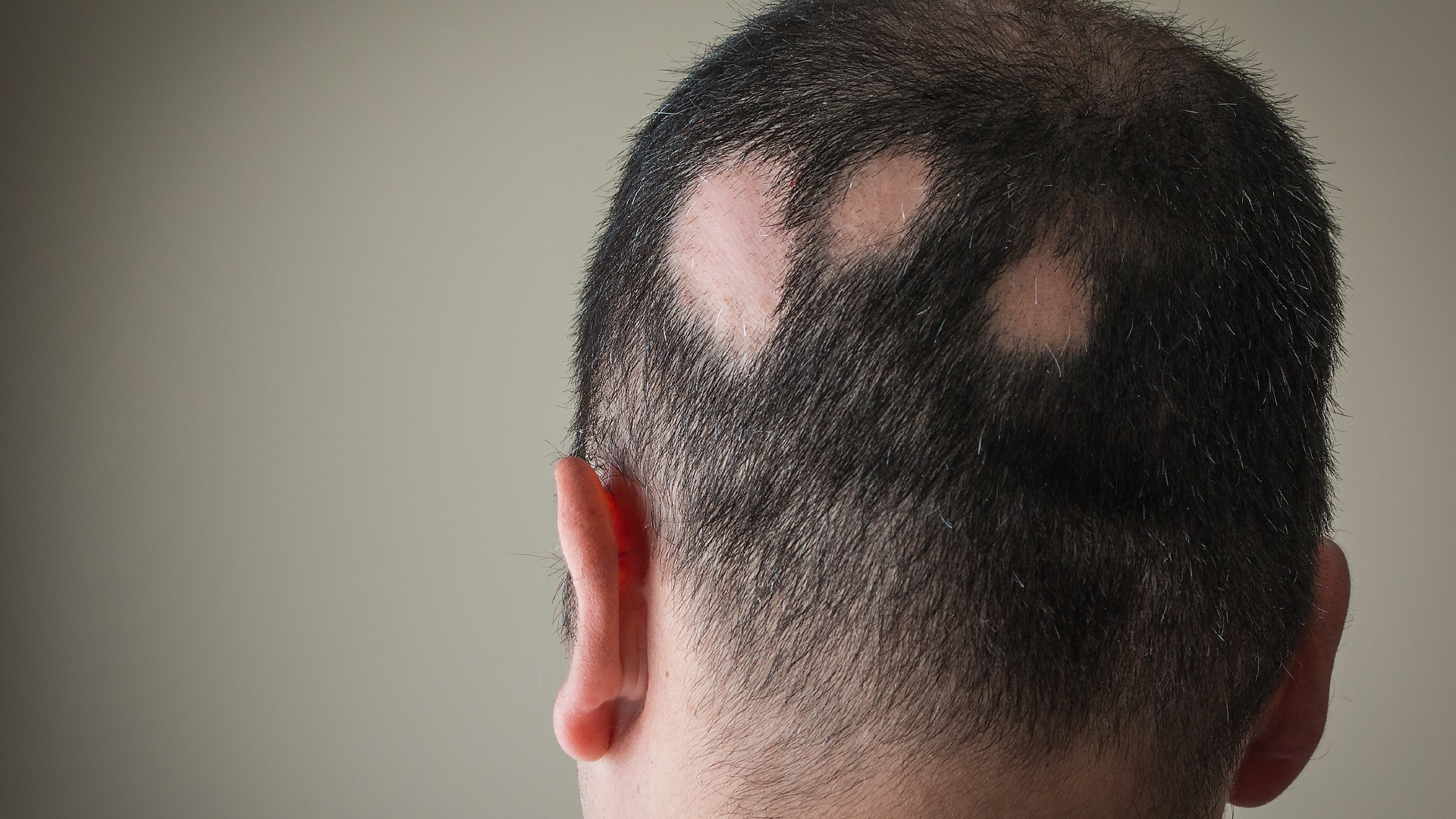
Alopecia areata
Alopecia areata is a form of alopecia manifested by a sudden loss of hair on limited areas of the scalp or body. It is an autoimmune disease that occurs in patients with no history of skin disorders or systemic diseases. It occurs when one or more round patches suddenly appear on the scalp, where the follicles turn white and stop growing. It affects both men and women and can be treated with appropriate medical therapy, although it may not prevent a relapse.
Trichotillomania
Trichotillomania, also known as trichomania, is a psychological health disorder manifested by compulsive pulling out of hair. In addition to hair, the patient may repeatedly pull out his or her moustache, beard, or hair (underarms, pubic hair, etc.). This behaviour leads to a more or less extensive absence of hair and/or body hair, resulting in areas of baldness or alopecia. In the most severe cases, trichotillomania is associated with the ingestion of pulled-out hair. Trichotillomania, which plunges the subject into great psychic suffering, is not linked to a whim or an aesthetic concern.
Trichotillomania could result from a genetic predisposition, with genetic factors playing an important role in the appearance of this psychological disorder. It may be linked to a family history, occurring in subjects with a family member affected by this pathology. It could be related to negative or morbid emotions and feelings, anxiety or frustration, family abandonment, or even deep stress or depression. Trichotillomania is usually treated with psychotherapy and/or medication, including antidepressants. Treatments such as hypnotherapy can also be effective.
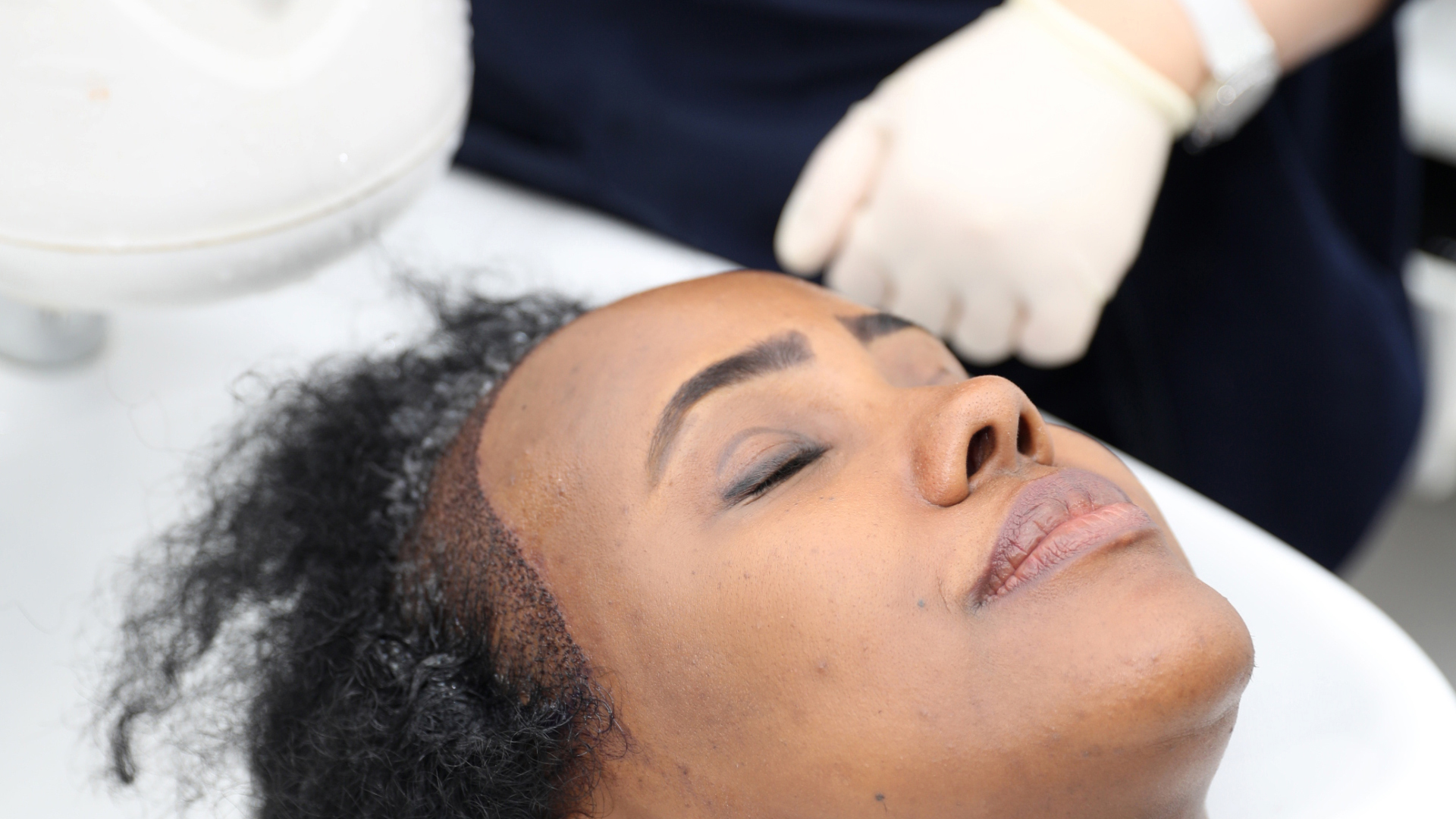
Traction alopecia
This type of alopecia, observed in women, is due to certain (bad) habits of hairdressers and beauty salons which, by dint of aesthetic care, end up traumatising the hair roots. Sirocco of the hair dryer, burns of the straightening iron, stress of the braids which, by dint of pulling, literally crack the capillary lines. Not to mention the chemical products, hairspray, dyes and other straightening products, which profoundly affect the health of the hair bulbs…This traction alopecia is particularly prevalent among women of Afro-Caribbean origin. For cultural, aesthetic, ethnic or climatic reasons, they have widely adopted hairstyles that are harmful to their hair. To see the little girls of African origin with mini braids stretched to hurt, the problem begins in childhood. Braids, plated in “cornfield” and “dreadlocks” in the Rasta fashion among reggae fans, pull the follicles and cause many micro-trauma on the scalp. Unnatural hair care products, synthetic dyes and follicle-damaging chemicals, such as glue to hold the braids, add to the trauma. Not to mention over-pulled roots under the sirocco of the hair dryer or a scalp that suffocates under wigs, all of this causes a form of alopecia that is highly prevalent in African-American women: central vertex centrifugal cicatricial alopecia (CVCA), also known as hot comb syndrome. While not ethnically specific, this traction alopecia is a common cause of hair loss in black women. Especially among women over forty, the problem hugely affects the Afro-female population worldwide.
Alopecia due to infection
Several forms of scalp infections can lead to hair loss: bacteria or fungus entering the scalp through a damaged epidermis (cuts, eczema, etc.), or through the hair follicles can disrupt the hair growth cycle. Whatever the nature of the infection, it is necessary to consult a dermatologist specialising in the scalp as soon as possible. These infectious diseases, when properly treated, allow a normal growth cycle to resume after healing. The most common forms of scalp infections are
- Folliculitis: a deep or superficial skin infection, due to a bacterial disorder that inflames the hair follicles and can damage them.
- Ringworm: observed especially in children sometimes suffering from dietary imbalance, tinea capitis weakens the hair to the root, causing bald patches on the head. It is the most common cause of childhood alopecia.
- Piedra: small mineral concentrations, hard like stony balls, cling to the hair until they cause its weakening and loss.
- Impetigo is a viral and contagious infection that can affect the hair and the rest of the body.
- Seborrheic dermatitis: this infectious disease inhibits hair growth, putting it to rest early until it falls out.
- Scalp psoriasis: creates red, crusty, itchy patches on the epidermis and scalp that cause itching that can damage the hair. The itchiness they cause can lead you to scratch and damage your hair.
- Yeast infections of the scalp: cause red, crusty, itchy patches on the skin, including the scalp. The itching they cause can lead to scratching and hair damage.
- Lichen planus: Causes red and purple bumps on the epidermis, resulting in discolouration, irritation and thinning of the hair.
- Scleroderma: Tenses the epidermis, drying it out and making it incredibly irritating. This can lead to alopecia or a significant hair loss problem.
Alopecia treatments
Nearly 80% of patients who opt for a hair transplant come with diagnosed androgenetic alopecia. The remaining 20% have metabolic, dermatological, nutritional or drug-induced alopecia. This differentiation, carried out during the consultation with a hair specialist, dermatologist or surgeon performing the hair transplant, is revealed through a trichotest, consisting of an elaborate questionnaire and a DNA test. These tests are used to analyse the genetic factors influencing the patient’s baldness and all other relevant elements of daily life: diet, lifestyle, medical history, psychological problems, etc…

Even though medical research has made progress in the knowledge of the different types of alopecia, and even though researchers have recently succeeded in cloning a hair follicle on human skin cultivated in the laboratory, the reality is that hair grafting remains the best solution for recovering a dense and natural head of hair after androgenetic alopecia. For other types of baldness, allopathic or naturopathic treatments and PRP injections can help to slow down or even stop hair loss, but not yet cure alopecia…

Natural treatments
Numerous natural remedies can help slow down hair loss and better care for the skin. In addition to eliminating stress and adopting a healthy diet rich in nutrients and minerals essential to the body, as well as hair hygiene without abuse (chemicals, colouring, hair spray, hair dryer too hot, etc. …), some natural recipes can be applied without risk. They may not have any concrete scientific basis, but they cannot harm the scalp! Rosemary essential oil and coconut, sesame or argan oils are known for their rich hair care properties, so choose shampoos that contain them. Here are also some recipes to adopt without restraint:
- Pure and organic coconut oil is a daily delight for hair. Apply 1 tablespoon mixed with carrot juice (2 carrots are enough), spread on the scalp, and leave for 30 minutes before rinsing.
- Mix (in a cold blender) a clove of garlic, onion and the juice of a lemon. Spread the juice obtained on the scalp, let rest 20 min before rinsing. It’s a crybaby, but it’s an effective remedy for hair loss.
- Massage the scalp with apple or rice vinegar or with pure aloe vera gel; leave for 10 minutes before rinsing with warm water.
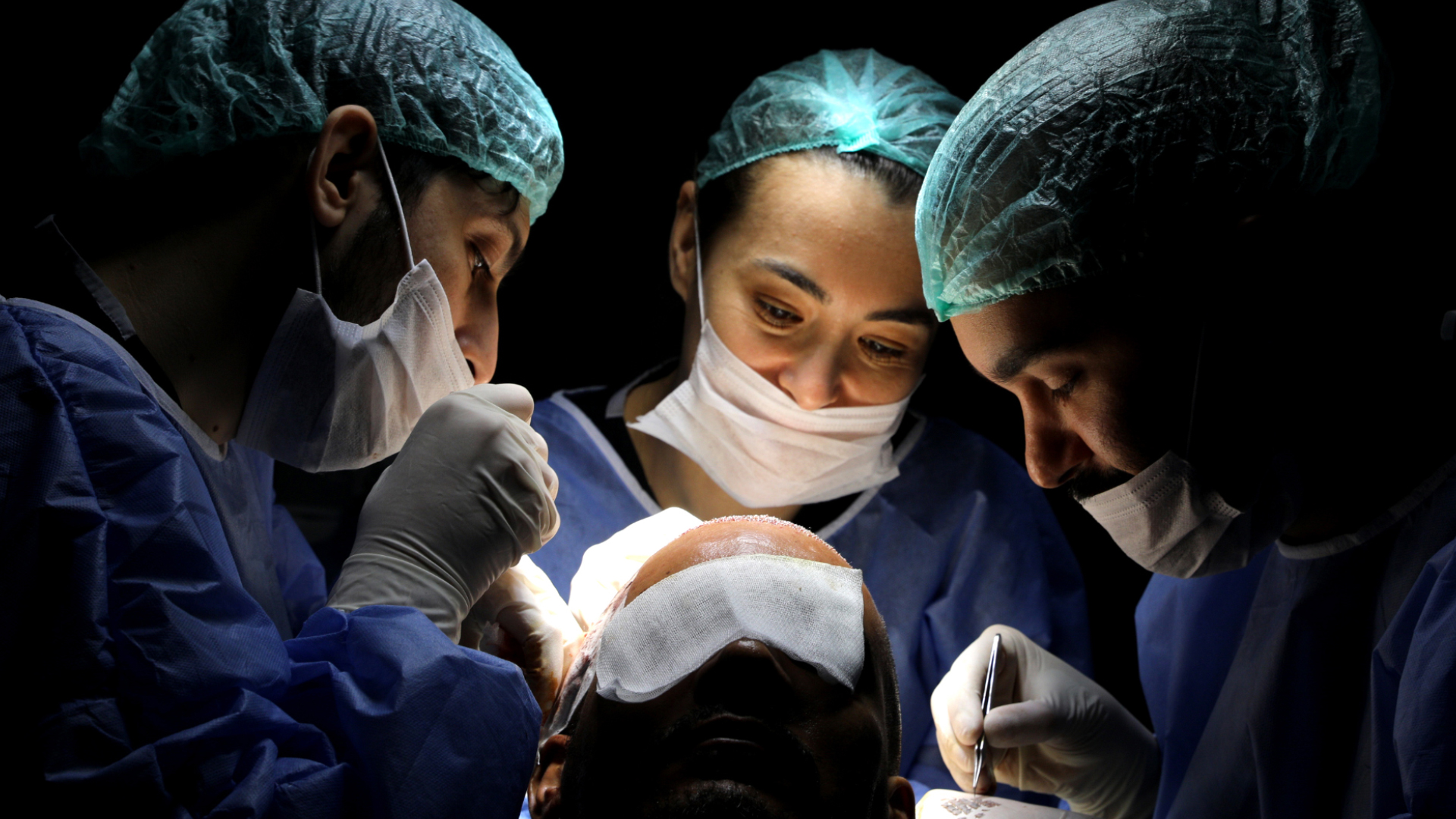
Cosmetic medicine treatments
Hair transplants
Over the past twenty years, hair transplantation has made spectacular medical progress in results, mainly thanks to the FUE (Folicular Unit Extraction) hair transplantation technique. This microsurgical method has revolutionised hair graft, with hair extracted and implanted by unit, unlike the old FUT technique, where the follicles were extracted in strips in the donor area before being transplanted into the recipient area. This allows the surgeon to work with more precision and finesse while determining the angle, depth and density of the channels, for a natural and invisible result to the naked eye. This method is usually preceded by a PRP treatment of the scalp to ensure better regrowth.
After the medical interview and a possible trichotest, and the adoption of the grafting technique best suited to the patient’s hair type, the surgeon will first define the donor and recipient areas. Then he will draw the growth lines of the future hair according to the patient’s physiognomy and desires. Then the necessary grafts are counted and taken from the occipital area (back of the head). Finally, the painless surgical act will consist of opening the channels in the recipient area and then positioning the extracted bulbs in the donor area. The FUE surgical procedure allows the extraction of each follicle at its root from the donor area using a micro “punch” electric stylet, whose diameter varies between 0.7 and 1.1mm. Thus, the transplantation does not leave a linear scar but rather points, made invisible by the hair growth, allowing to enlarge the graft collection area. In addition, it allows to limit the time spent by the extracted follicles outside the epidermis: the shorter the delay, the more chances the follicle has to survive and to start again. The whole operation takes between 4 and 8 hours, depending on the area to be covered and the desired density.
The use of styluses with sapphire blades guarantees the success of the transplant and quick healing. Practised in specialised clinics around the world, this method of FUE hair graft is non-invasive, leaves no scarring and requires very little post-operative care. It can be combined with the DHI (Direct Hair Implantation) method to ensure a denser regrowth.
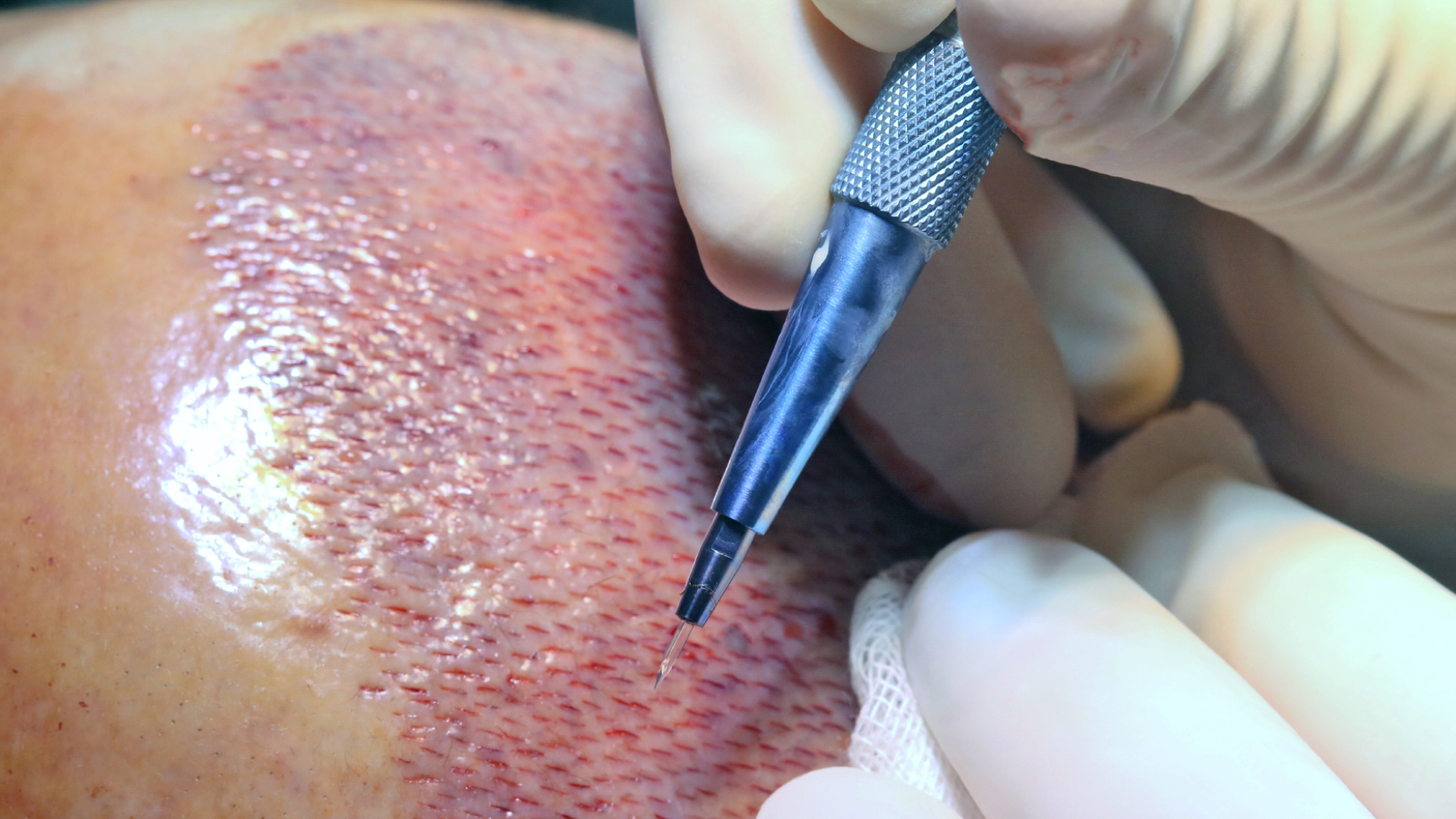
The FUE surgical procedure extracts each hair follicle at its root from the donor area (usually at the back of the skull) using a micro “punch” electric stylet, whose diameter varies between 0.7 and 1.1mm. Thus, it no longer leaves a linear scar but points, made invisible by the hair growth and allows to enlarge the graft collection area. This ensures a more stable growth of the grafts and more natural hair. Performed under local anesthesia, in a single session and with light post-operative care, it allows the patient to resume his everyday life the next day.
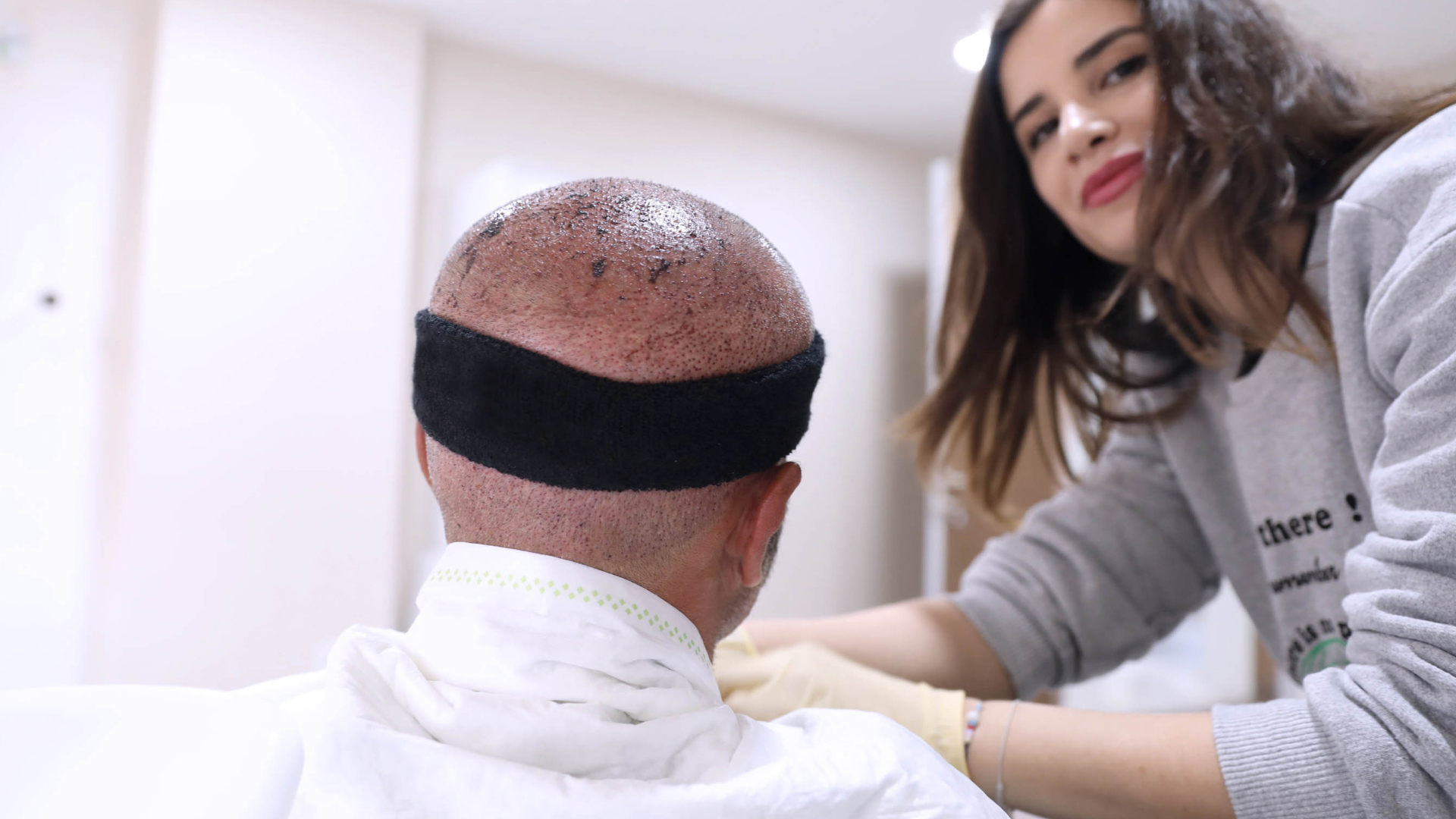
Laser hair treatment
Many patients who suffer from loss of hair density choose laser treatment. This low-intensity laser therapy system is indicated for men and women with primary androgenetic alopecia to stop hair loss and stimulate regrowth. It targets the areas most prone to alopecia: the temples, the forehead, and the crown (top of the head). However, it does not provide the same results as a hair transplant. On the other hand, as a complement to a hair transplant, laser treatment has an anti-inflammatory action and stimulates the regrowth of transplanted hair. It can therefore be prescribed before or in addition to a hair transplant.
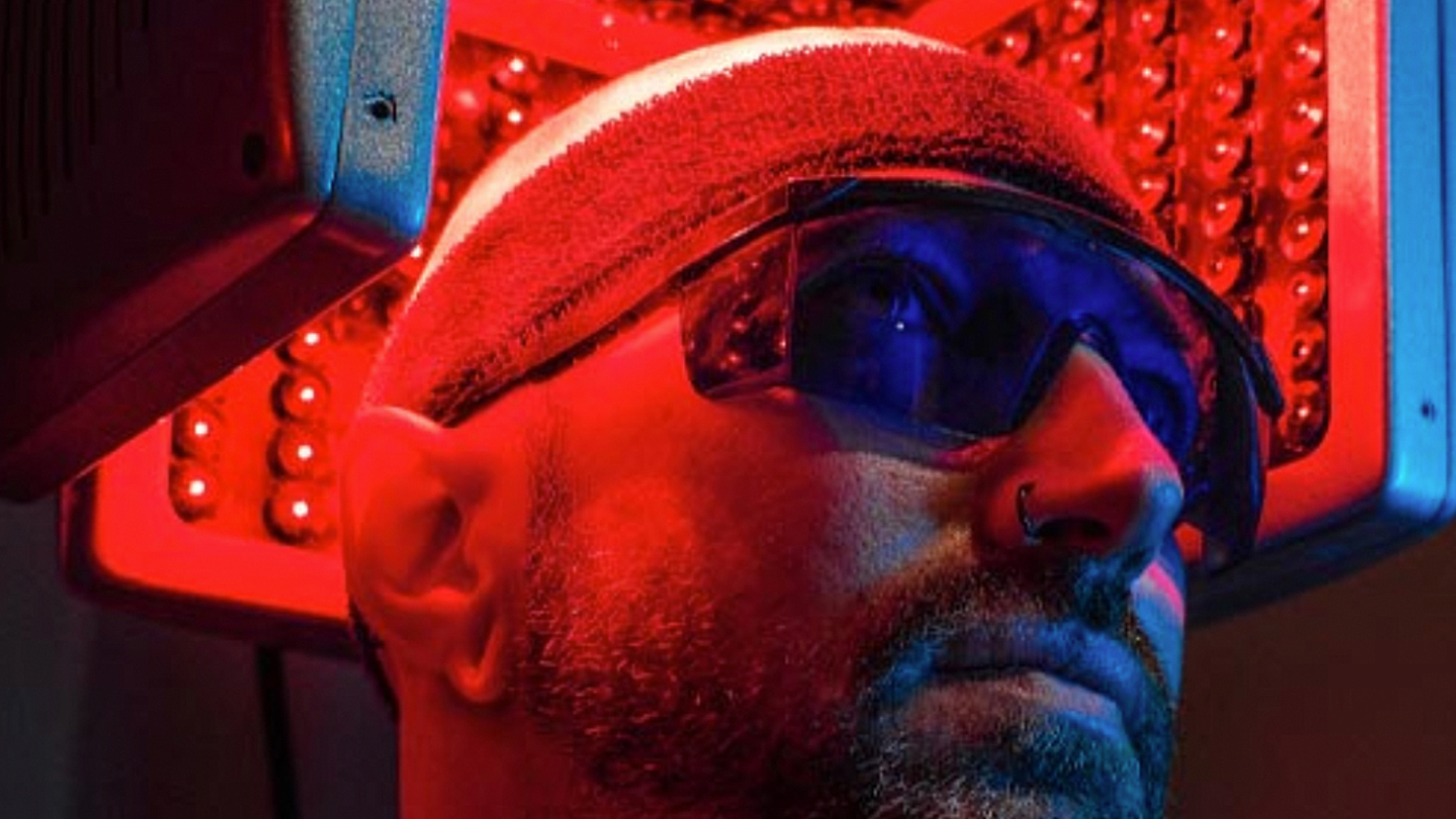
This technology works on the principle of photobiomodulation by stimulating the cellular activity of hair follicles. Based on the photosynthesis model in plants, photobiomodulation provides the energy the follicles need to regenerate. With its light energy, laser light increases the amount of adenosine triphosphate (ATP), the fuel of living cells in the follicle, thus promoting cell activity.
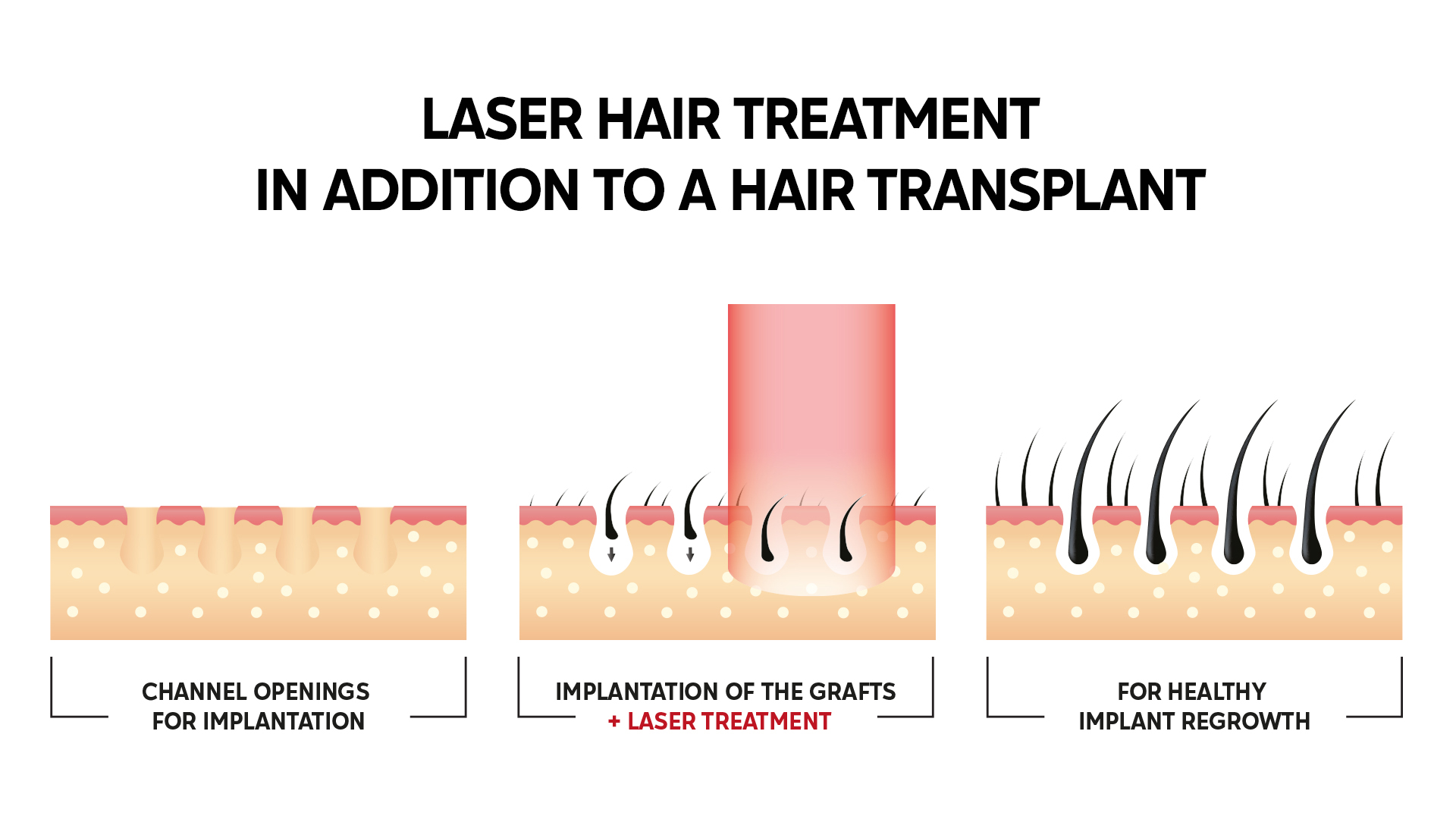
PRP treatment
PRP (Platelet Rich Plasma) treatment, also known as platelet mesotherapy, fights hair loss in men and women. Non-invasive, the treatment consists of re-infiltrating blood platelets into the hair, after a small amount of blood has been taken from the patient, then centrifuged to remove the blood platelets from the rest of the blood fluid. A true concentrate of growth factors, PRP stimulates the regrowth of hair cells. Performed alone or as a complement to a hair transplant, this treatment uses the growth factors contained in Platelet Rich Plasma to stimulate hair growth and regain a thick head. This complementary treatment is systematically included in Body Expert’s FUE hair transplant packages.
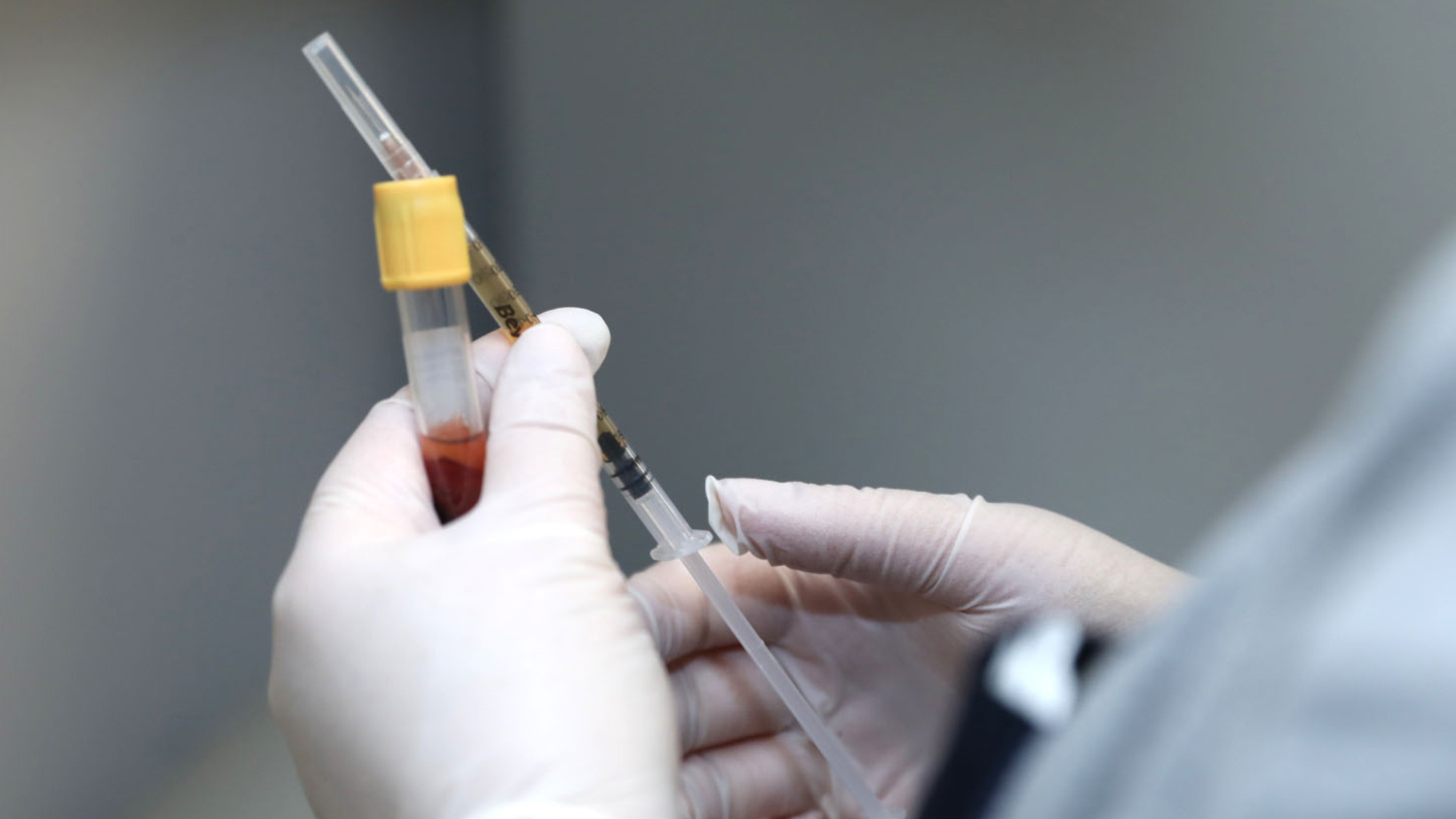
Hair mesograft
The Regenera Activa mesograft is a state-of-the-art technique based on cell regeneration. This treatment, offered to patients suffering from androgenetic alopecia, helps stop hair loss and stimulate regrowth. For both men and women, Regenera Hair Mesograft is based on the cultivation and re-introduction of mesenchymal stem cells, previously extracted from the patient’s scalp, to reactivate follicular units damaged by androgenetic alopecia. In most cases, the cells are taken from the posterior Hippocratic crown of the hair, at the back of the skull.

Drug treatments
When it comes to cure non-genetic alopecia (linked to an infection), a psychological shock or drug treatment, adapted allopathic treatments are proposed to patients by their specialist doctors. On the other hand, there is currently no effective medication that can stop baldness and allow hair to grow back. And if your dermatologist tells you otherwise, you will have to follow his prescription for the rest of your life, putting up with potentially dangerous side effects for a dubious result.
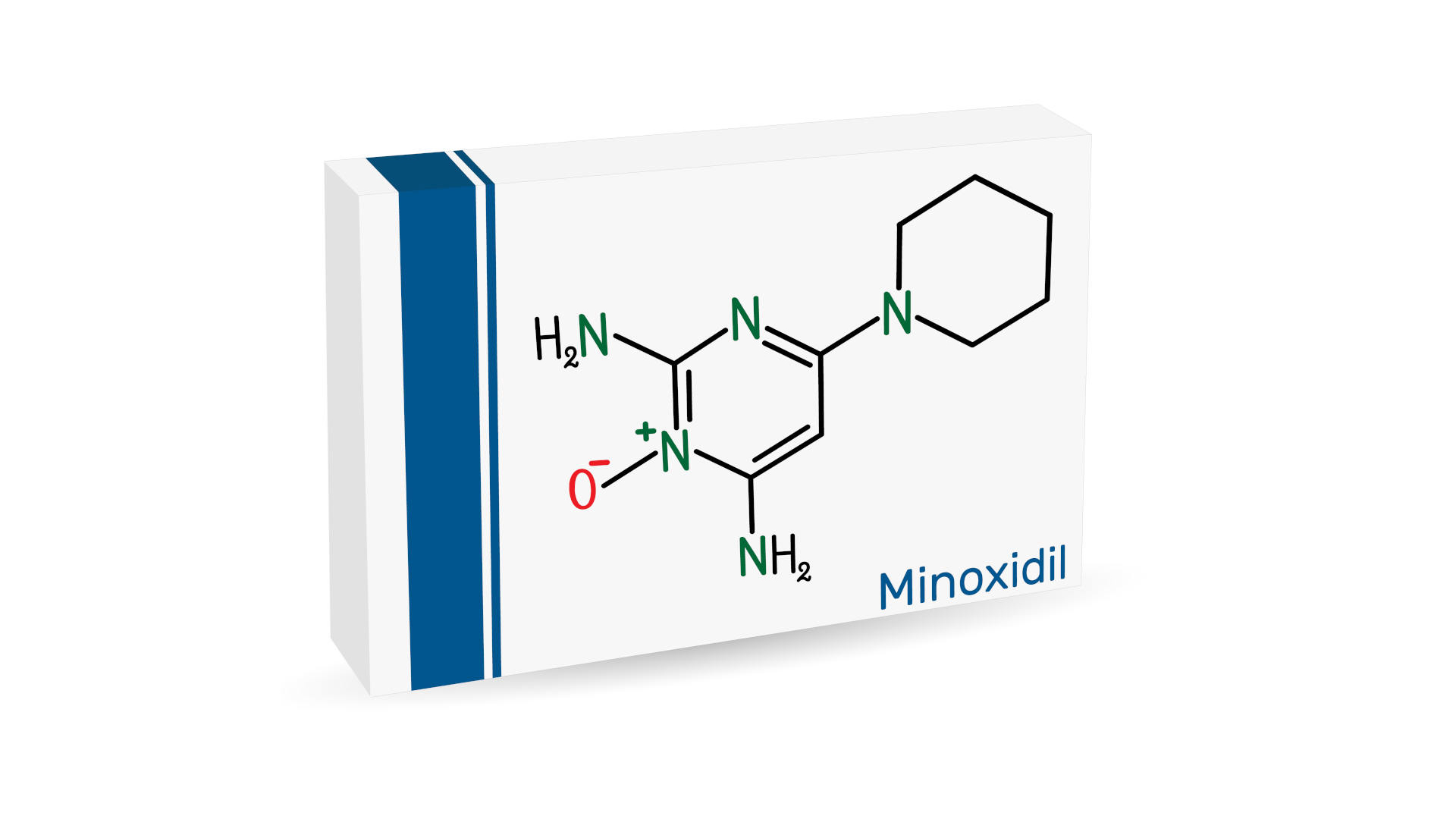
Minoxidil
Minoxidil is a substance that stimulates hair growth and slows down hair loss. It is also a vasodilator used orally to treat high blood pressure. Its antihypertensive effect is, however, imperceptible when applied locally to the scalp. Dosed at 2% or 5% in liquid solution or cream, it is prescribed for treating androgenetic alopecia in men and women. Present in the medications Alopexy, Alostil and Unipexil, this medication can be purchased in pharmacies without a prescription. It should not be used anywhere other than on the scalp and is not recommended in cases of scalp infection. The treatment is only effective after 4 months or more and should never be interrupted: when the treatment is stopped, the regrowth ceases, and a return to the initial state can be expected within 3 or 4 months.
In addition, it can have undesirable side effects on patients. In the event of a drop in blood pressure, increased heart rate, chest pain or severe skin reactions, treatment should be discontinued. It may also cause minor skin reactions: irritation, redness, burning, itching, dryness of the skin; excessive hair growth outside the treated area. Rarer cases of allergy, dizziness, tingling, headache, weakness, eye irritation, visual disturbances, taste alterations, ear infection, oedema, and neuritis have been reported, as well as hair loss (paradoxical effect), irregular hair, chest pain, lowered blood pressure, increased pulse rate, increased transaminases. Due to the presence of propylene glycol, patients are also at risk of eczema. If the solution is accidentally splashed in the eyes, on mucous membranes or on broken skin, rinse thoroughly with water.

Propecia®/finasteride
Propecia® is an anti-alopecia dermatological drug sold in the UK, the US, Europe and Canada since 1999. Propecia (its commercial name) and its generics (Finasteride) are indicated to treat male hair loss (androgenetic alopecia), which leads to baldness. Millions have taken or are taking it since it was marketed, prescribed for baldness in the form of a cream containing 1 mg of Finasteride. Although it has been prescribed for and used by millions of men worldwide, the suffering of thousands of men exposed to this substance has raised questions. Thanks to this pill, they hoped to slow down their hair loss. The result: depression, suicidal thoughts, severe insomnia, intense sexual disorders, and inability to work … In several countries, including the US and the UK, thousands of people have filed lawsuits against the very powerful laboratory Merck & Co (MSD), which keeps on marketing and make millions of dollars with this drug, despite its devastating psychiatric side effects. All this for a small benefit for the baldness of thousands of patients, who can only expect an increase of about 10% of the number of hairs, and only on the top of the head.
Cosmetic treatments
Powders and wigs, known since antiquity, have lost their former popularity with their users and today remains primarily a prop for cross-dressing, theatre or cinema. On the other hand, hair micro-pigmentation is enjoying renewed success, especially for men with total baldness.
Hair micropigmentation
Hair micropigmentation, also called dermopigmentation or tricopigmentation, is a scalp tattooing technique that consists of inserting tiny organic pigments into the surface layer of the epidermis that replicates hair follicles.
This stippling tattoo is performed with a dermograph, whose needle, driven by an electric motor, penetrates the skin to a depth of about 1 millimetre, and injects bioresorbable, organic and insoluble micro-pigments. These tiny dots of colour simulate hair by blending with the patient’s natural pigmentation and generally remain for 3 or 4 years, like a semi-permanent makeup technique. Micropigmentation can be applied to the scalp, the beard, eyebrows, or any hairy area chosen by the patient.
Micro-pigmentation is a less cumbersome alternative to hair transplantation for incipient, partial or sparse baldness. It creates the illusion of a shaved head. Micropigmentation can also complement a hair or beard transplant in order to densify the implanted area or the donor area. Indeed, if the implanted grafts allow the recreation of hair, the implantation of follicles according to the FUE (follicular unit extraction) or FUT (follicular unit transplant) techniques can leave tiny spaces between the grafts, or scars left by the extraction of the grafts, which can be filled in by dermopigmentation.
Unlike a hair graft, it is a simple, discrete, non-invasive technique and, above all, less expensive. Finally, it is not irreversible: the pigments inserted in the epidermis generally fade after three or four years, allowing the patient to consider, at the end of this period, renewing his or her dermopigmentation or starting a real hair transplant.
32893 vues
4 commentaires
0


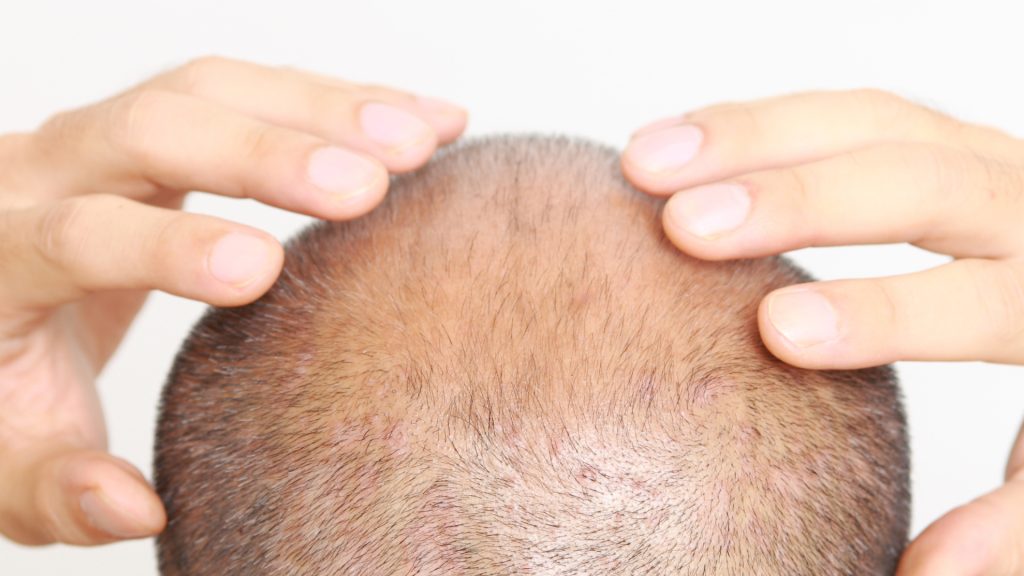
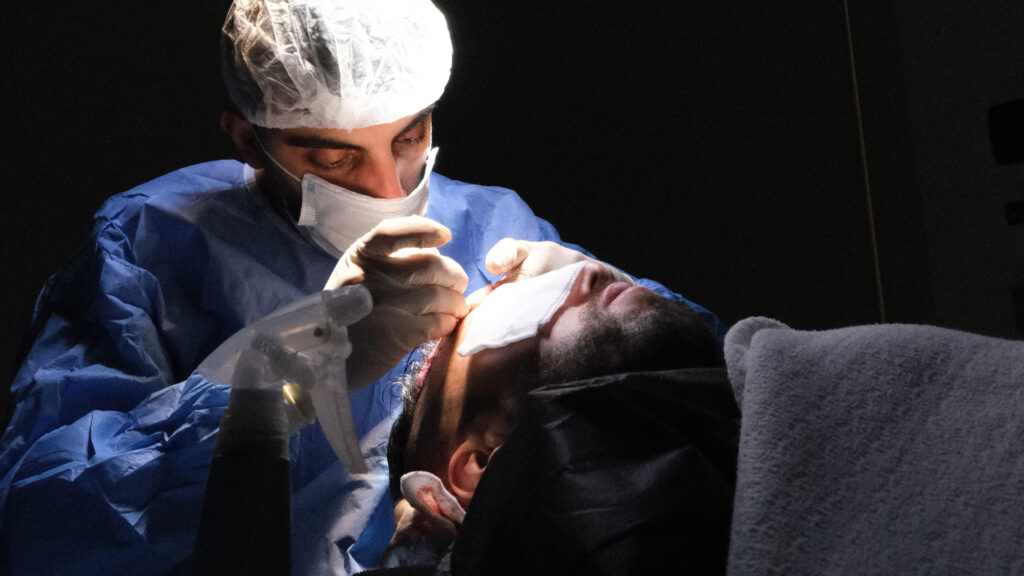
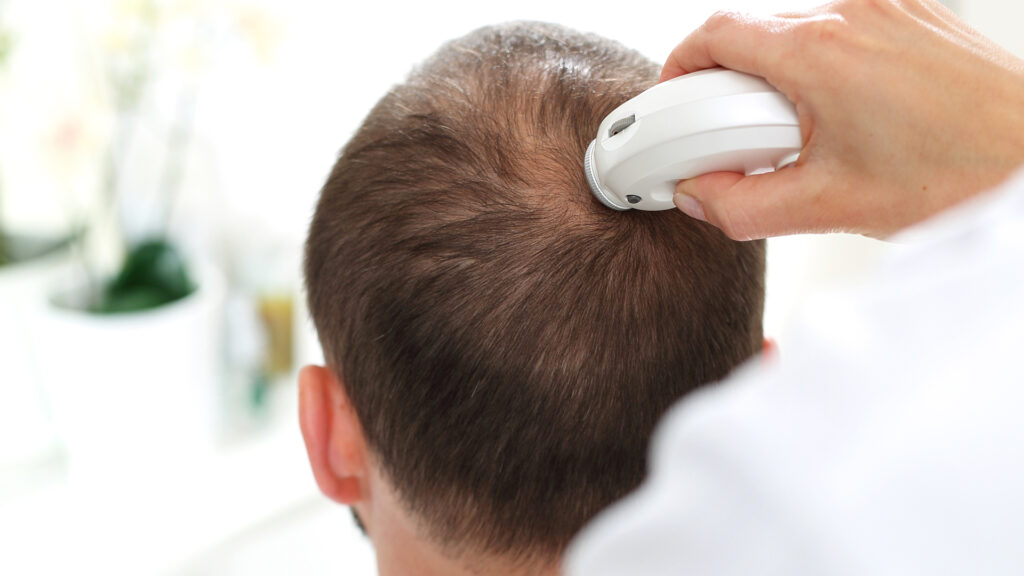
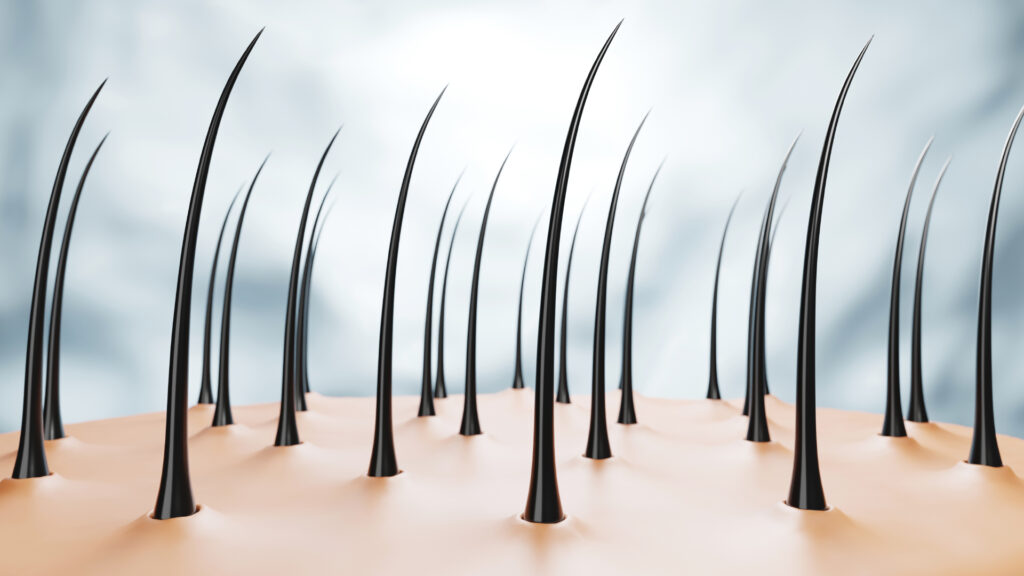
4 Commentaire(s)
thnnk uuu
Thank you ???????? from the bodyexpert.online team
Thank you for sharing this informative article; it will really help us.
Hello and thank you ???????? for your compliments from the bodyexpert.online team.